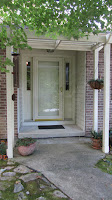Most lives are not linear. We all take side trips. For example, from 2003 through 2007, while continuing my work in Conservation Biology, I also served as Poetry Editor for Rapid River Arts and Culture Magazine published in Asheville, North Carolina (http://www.rapidrivermagazine.com/). During that time, with the support of the editorial staff, I encouraged previously unpublished poets to find their voice and publish their works. Many of those who published in the journal's poetry pages were people searching for new purpose and direction in their lives and many of those were women.
GENESIS
The Time of Man
Over 14 billion years ago it began
and has gone on since then.
Over 14 billion years ago it began
and has gone on since then.
From brutal rock on an airless world,
to the slime from which life uncurled,
through the gradual greening of the world.
And then they crawled on to the land,
floppy things struggled upon the sand,
the ancestors of what one day would be called ‘man.’
Gray mists rose from swampy pans,
flowing out over the land,
and great lizards took their stand.
But even these giants surrendered their place,
to small furry things
of another race.
The air grew sweet,
the skies turned blue,
and the heavens were filled with life that flew.
And so the days went on,
following Earth’s evolving song
under the yellow, warming sun.
Mastodons and mammoths passed this way,
and people like us but strange in some ways,
and then it became the time of modern man.
Great glaciers began to melt,
rivers once clear turned brown,
and poisons seeped out over the ground.
Over 14 billion years ago it began,
and it has gone on since then,
until now,
until the time of modern man.













